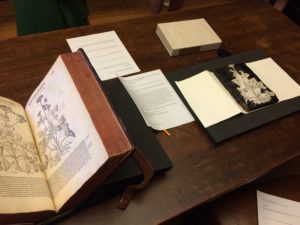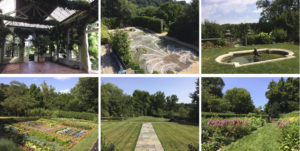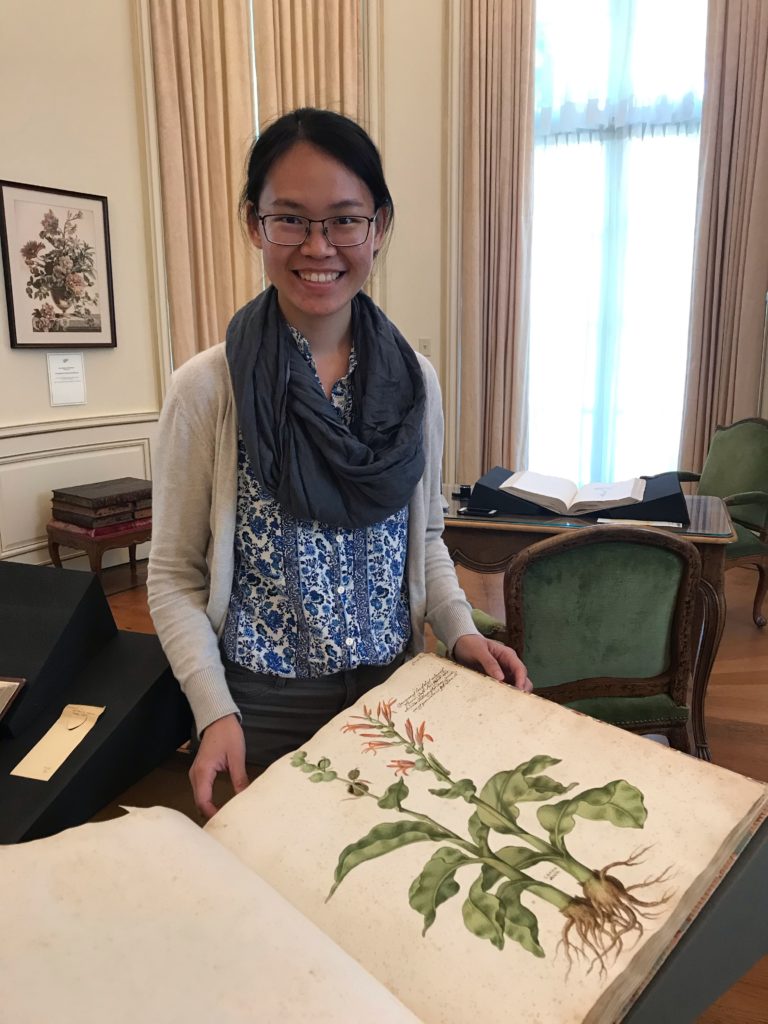“If you have a garden and a library, you have everything you need.”
—Marcus Tullius Cicero
Plant Humanities Summer Program
During the month of July I took part in the Plant Humanities Summer Program at the Dumbarton Oaks research Library and Collection in Washington, D.C. The institution has three major focuses of study—Byzantine, Pre-Columbian, and Garden and Landscape—and Plant Huminites is a new initiative under the Garden and Landscape Studies. The participants of the program were diverse, with backgrounds in history, literature, botanical and fine art, and biology, to name a few. All of us somehow found our ways to plants though personal stories or research subjects, or sometimes both. During the month, our group learned about the history of plants and gardens, visited the National Herbarium at the Smithsonian Institution, the nursery of the US Botanic Garden, the Oak Spring Garden Foundation, and several other places. Even though much of the covered material was familiar to me, it was a wonderful chance to rethink many of the ideas for my dissertation and be inspired by people with very different expertise.
Of space
The major part of our time at the Dumbarton Oaks was to write a short essay to trace the cultural history of a plant of our preference.[1] Aside from the wealth of secondary literature in the modern library, we had the luxury to work closely with many incredible early modern books from the Rare Book Collection to research our plants (Fig. 1). One could say that our summer was all about plants and books, two of the best things in the world in my opinion. At the end of the program, we were reminded that our engagements with plants and books took place in an institution with both a library and a big garden. Plants and books come together at the Dumbarton Oaks, a space aimed to nurture and promote learning in the Humanities. Plants and books are also tangible materials that occupy physical space, and we should always remember the impact places like a library and a garden have in shaping experience.
Fig. 1. A copy of Pietro Andrea Mattioli’s herbal and the woodblock that printed the illustration from the Rare Book Collection of the Dumbarton Oaks.
Looking back to the month of July, space was indeed an important part of my experience at the Dumbarton Oaks. The program included several garden visits. At each location, we learned about their landscape designs from different time periods—the use of space in a formal way. Additionally, we learned about the curation of plants for different parts of the gardens—how space affected the selection and display of plants. However, perhaps more importantly, was the combination of having both a garden and a library on site. During the program, I would work with rare books in the Study or read secondary literature in the modern library to understand nature through text and image. At the end of the day, I often strolled through the quiet garden (Fig. 2) to unwind and contemplate on the research materials in a manicured nature. I moved between these spaces, and had a garden and a library at my disposal. In the word of Cicero, I had everything I need.
Fig. 2. Snapshots of different corners of the Dumbarton Oaks garden.
The modern humanist experience
But it was more than just having everything I need. Within the premises of the Dumbarton Oaks is a space full of nature and culture in a somewhat secluded areas in the urban Washington, D.C. Inside, all the world’s problems and worries seemed so far away. The beauty of the world was amplified, and I was able to not only discuss topics on plants and botanical history, but also exchange different kinds of knowledge with and learn from the expertise of my fellow participants. To think about it, is this not a similar experience of an early modern humanist, who traveled to and lived in a prince’s castle somewhere in the German mountains to visit their flowers in the gardens, books in the libraries, curiosities in the cabinets, and discuss their thoughts with other humanists in the pursuit of knowledge?
Without a site, early modern collections of all kinds would not have a physical space to house and display objects. However, the site is not just a box to contain everything. How people move through the space and interact with each other and the objects—or the choreography within the space—is what encouraged exchange.[2] I have been to many gardens and libraries, and many of which are objectively more impressive in terms of scale and value of collected items. Nonetheless, it was only until this extended stay at the Dumbarton Oaks where plants, books, and people intermingle in the same space that I get to really think about the critical role of space in knowledge production on a more personal level. In a way, this summer program was a transhistorical experience of an early modern court as a humanist center.
Plants, books, and people in a space
As I spent my last day at the Dumbarton Oaks at the end of July, I returned to some of the rare books we got to see during the program (Fig. 3). In the reading room, I had all the space to spread the books out. I did not have to compete with the other participants to see the details this time. Yet, I could not help but feel that the discussion sessions with the group of a dozen people around the books were so much more stimulating. The intellectual exchange on the objects in the study space led to many observations and discussions I would not have gotten to on my own. The space and people changed, and so did my experience with the books. Naturally, no matter how extensively one researches, it is not possible to fully reconstruct the experience of an early modern humanist’s time at court or similar historical accounts, as experience is fleeting and not replicable. Nevertheless, my transhistorical experience at the Dumbarton Oaks was a good start to further comprehend what is possible for the Humanities when having books, plants, and people together in a lovely space.
Fig. 3. An impressive album of plants painted by Giovanna Garzoni (with me in the picture for scale) that I got to study in detail upon my return after the summer program.
[1] For example, Yota Batsaki, Executive Director of the institution and the principal investigator for Plant Humanities Initiative, and former Dumbarton Oaks Fellow Philip Gant wrote about the perception of kudzu since its introduction to the U.S., “The Secret Life of Kudzu A plant scorned as an invasive species offers a wealth of practical uses and cultural significance,” https://blogs.scientificamerican.com/observations/the-secret-life-of-kudzu/.
[2] For a short and sweet example on choreography in a space, albeit in a different context of a glass studio, see Márcia Vilarigues, “Choreographies of Glassmaking: An Impression,” https://artechne.wp.hum.uu.nl/choreographies-of-glassmaking-an-impression/.


